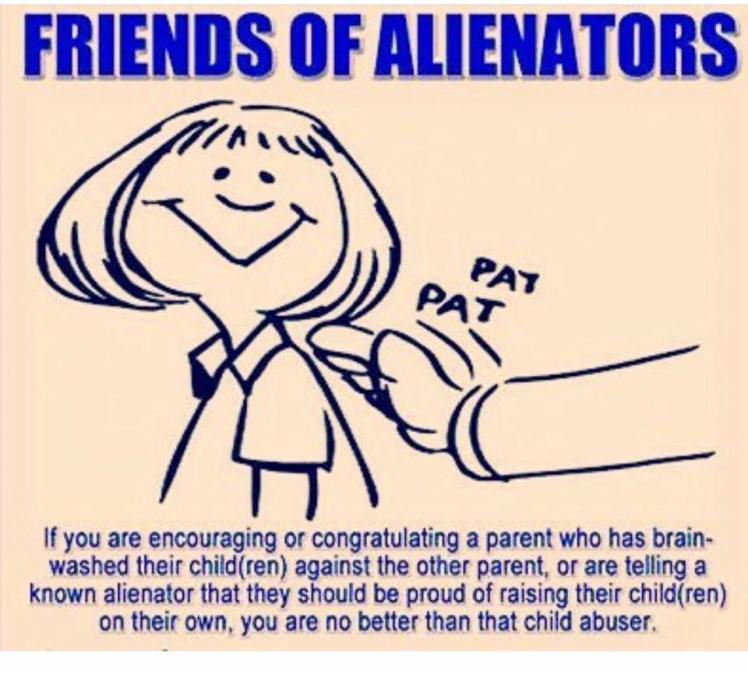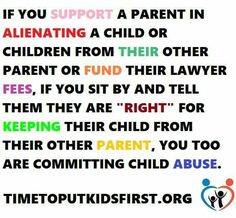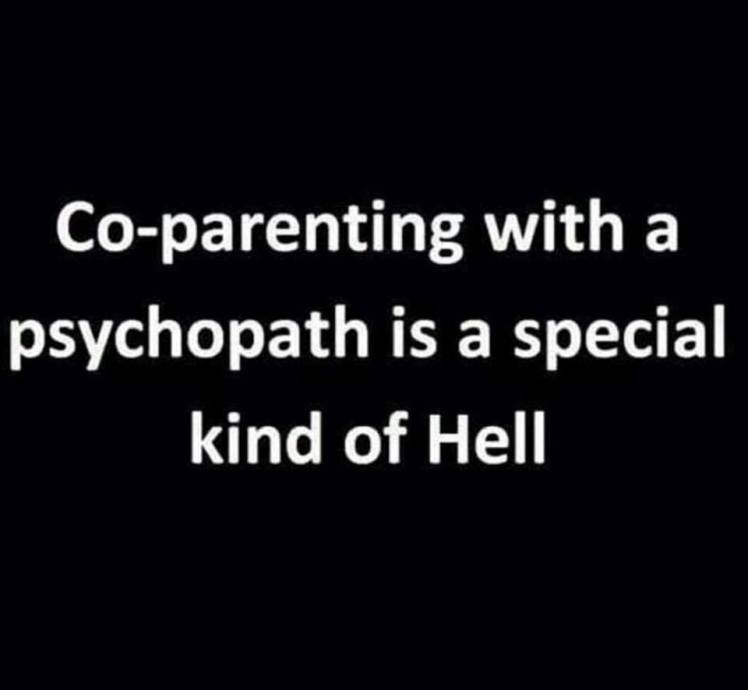To be the targeted parent of “parental alienation” (AB-PA) is traumatic. The type of trauma is called “Complex Trauma,” and the form of complex trauma is called “traumatic grief.”
To the targeted parents, I am a clinical psychologist. What you are experiencing is a form of Complex Trauma called “traumatic grief.”
Wikipedia: Complex Post-Traumatic Stress Disorder
When I meet with targeted parents for consultations, I often end the consultation by providing encouragement to the targeted parent to find areas for self-nurture to address their complex trauma and traumatic grief. The analogy I use is that if your child is in quicksand, it doesn’t help for you to jump into the quicksand after them, because then you’re both in trouble. The targeted parent needs to stand on the solid ground of your own emotional and psychological health and to throw your child a rope that your child can use to pull himself or herself out.
Will your child grab the rope? Probably not. Your child has to live with the pathology of the narcissistic/(borderline) parent. Your child has to do what they have to do to survive in that upside-down and psychologically dangerous world of their narcissistic/(borderline) parent. Until we are able to first protect the child, we cannot ask the child to reveal their authenticity. We must first protect the child.
It doesn’t help if you jump in the quicksand too. Your psychological trauma is real. It’s a form of complex trauma called “traumatic grief.” It is a central feature of the pathogen that is creating the attachment-related pathology of “parental alienation” (AB-PA). I’ve read the “source code” of the pathology, the information structures of the attachment system that create the pathology, and the complex trauma of traumatic grief is embedded in the source code of the pathogen.
One of the core guiding features of the information structures that create this pathology is the creation of traumatic grief in the targeted-rejected parent. That’s what the information structures of this pathogenic agent in the attachment system are designed to do, they create the complex trauma of traumatic grief in the targeted parent. Let me explain.
In the Wikipedia article I cite above, notice the linkage of Complex Trauma to both attachment-related pathology (disorganized attachment) and borderline personality pathology.
The childhood origins of attachment-based “parental alienation” (AB-PA) are in the disorganized attachment – the attachment trauma – of the narcissistic/(borderline) parent (“disorganized attachment” is a defined and researched category of “insecure attachment”; see for example, Main & Hesse, 1990; Lyons-Ruth, Bronfman, & Parsons, 1999).
And disorganized attachment in childhood is at the core of the later development of borderline personality pathology:
“Various studies have found that patients with BPD are characterized by disorganized attachment representations (Fonagy et al., 1996; Patrick et al, 1994). Such attachment representations appear to be typical for persons with unresolved childhood traumas, especially when parental figures were involved, with direct, frightening behavior by the parent. Disorganized attachment is considered to result from an unresolvable situation for the child when ‘the parent is at the same time the source of fright as well as the potential haven of safety’ (van IJzendoorn, Schuengel, & Bakermans-Kranburg, 1999, p. 226).” (Beck, et al, 2004, p. 191)
Notice that I always link the narcissistic and borderline personality of the allied pathogenic parent in AB-PA using the term “narcissistic/(borderline)” parent, embedding the term “(borderline)” in parenthesis. This is to make the point that the narcissistic personality has a borderline core. These personality pathology styles are simply differing outward manifestations of an identical underlying core attachment pathology.
“One subgroup of borderline patients, namely, the narcissistic personalities… seem to have a defensive organization similar to borderline conditions, and yet many of them function on a much better psychosocial level.” (Kernberg, 1975, p. xiii)
“Most of these patients [i.e., narcissistic] present an underlying borderline personality organization.” (Kernberg, 1975, p. 16)
Kernberg, O.F. (1975). Borderline conditions and pathological narcissism.. New York: Aronson.
There is a diagram of the attachment-related pathology of AB-PA on my website:
Work your way from the bottom of this diagram to the top along two separate but interrelated lines. The inside description is the personality disorder line of disordered mourning and the pathological processing of sadness and grief, the outside lines are the attachment related lines, that leads to the trauma reenactment narrative.
Now look again to the description of Complex Trauma in Wikipedia. Notice the association of Complex Trauma with both disorganized attachment and borderline personality pathology (narcissistic personality pathology is less studied in the research literature because the narcissistic personality rarely if ever presents for therapy).
The childhood disorganized attachment of the narcissistic/(borderline) parent constellated during the adolescent and early adulthood developmental periods into the personality pathology of the narcissistic-borderline parent that drives the current “parental alienation” process (AB-PA).
Whether the manifestation of the underlying attachment trauma assumes a more narcissistic-style or borderline-style of expression depends on how the narcissistic/(borderline) parent-as-a-child responded to and coped with the childhood attachment trauma. A disorganized attachment with avoidant overtones leads to a more narcissistic style of personality presentation in which loving attachment relationships are devalued. A disorganized attachment with strongly anxious-ambivalent overtones in which a child tries to maintain an attachment bond to a frightening and dangerous parent (Beck et al., 2004), leads to a more borderline-style presentation of chaotic and hyper-expressive mood swings (called “protest behavior”) and continual fears of abandonment.
At the core of both personalities is a profound inner emptiness – a vacancy of being. The borderline style personality experiences this profound emptiness nearly all the time, and much of the relationship effort by a borderline-style personality is designed to fill the core emptiness of their being. The borderline-style personalty engages in frantic efforts to continually remain the center of attention, seeking constant reassurances of being loved. Any real or imagined slights that suggest that the borderline personality might not be loved result in excessively angry displays of vitriol and victimization directed toward the failing attachment figure.
Think of the borderline-style personalty as emerging from a child who is trying to form an attachment bond to an unstable frightening and dangerous parent, yet a parent who is nevertheless also a source of nurture. Even when an attachment bond can be formed, it is fragile and the child is exceedingly anxious and hyper-vigilant for signs of abandonment that can signal the emergence of the frightening, dangerous, and rejecting parental attachment figure.
The narcissistic personality, on the other hand, results from a child who chooses a different approach to coping with a frightening-rejecting parent. In the formation of the narcissistic-style personality, the child chooses safety over intimacy. The child dismisses the importance of forming an attachment bond to the frightening-rejecting parent (called an “avoidant” attachment style). The narcissistic-style personality sacrifices intimacy for safety.
But sacrificing intimacy with the attachment figure of the parent creates a core emptiness in the self-experience of the child. The psychological intimacy with our parents that the rest of us experienced as children established in us a core inner sense of our healthy narcissism; that we are fundamentally valued and valuable people. This didn’t occur in the childhood of the narcissistic personality. In avoiding intimacy with the dangerous-rejecting attachment figure, the core sense of self as being valued and valuable did not get established. Instead an artificial pathological narcissism developed of fragile over-inflated self-grandiosity and self-importance that is not rooted in an authentic belief in one’s true core value.
Just like with the borderline personality, at the core of the narcissistic personality is a fundamental inner emptiness of being. The difference is that by adopting a narcissistic defense of grandiose self-importance in which other people, and intimate relationships with other people, are devalued, the narcissistic personality is able to develop a slightly greater stability in functioning – as long as the person can maintain the narcissistic veneer of self-value.
However, if the narcissistic defense is penetrated by criticism or rejection – especially by rejection – which exposes the core self-inadequacy of the narcissistic personalty (called a “narcissistic injury”), then the narcissistic personality will collapse into it’s borderline core of profound inner emptiness. When rejected, the narcissistic personality responds with rageful and demeaning attacks on the other person (called “narcissistic rage”) in order to reestablish the narcissistic defense of grandiose self-importance by devaluing the importance of the other person (“I’m not the inadequate person; YOU are.”)
AB-PA and Complex Trauma
The origin of the attachment-based pathology of “parental alienation” (AB-PA) is to be found in the childhood attachment trauma of the narcissistic/(borderline) parent, who is then transferring this childhood trauma into the current family relationships, a process mediated by the personality disorder pathology of this parent that is itself a product of this parent’s childhood attachment trauma.
In the pathology of “parental alienation” (AB-PA), the complex developmental trauma from the childhood of the narcissistic/(borderline) parent, that has become frozen into the pathological personality structure of this parent, is being transmitted to you, the targeted-rejected parent, in the form of “traumatic grief.” You, the targeted-rejected parent, are being made to hold the complex trauma that was the childhood experience of the narcissistic/(borderline) parent.
At the core of this complex trauma is the pathological processing of sadness, grief, and loss of the attachment figure:
- The parent in the childhood of the current narcissistic/(borderline) parent;
- The spousal attachment figure in the divorce;
- The beloved child of the targeted parent in “parental alienation.”
The organizing central theme of “parental alienation” (AB-PA) is pathological mourning. The pathological processing of sadness, grief, and loss.
I’ve read the “source code” of this pathogen (I’ve read the content and process of its information structures). I know what it is and I know how functions. Once we’ve solved this pathology and bring this family nightmare to an end, I’ll begin to unpack the deeper levels of this pathology for my professional colleagues. But for now, let me simply identify what is occurring for you, the parent who is being targeted for rejection by this severe and horrific form of trans-generational attachment pathology.
The overall attachment-related pathology is called “pathological mourning” (Bowlby, 1980).
“The deactivation of attachment behavior is a key feature of certain common variants of pathological mourning.” (Bowlby, 1980, p. 70)
Bowlby, J. (1980). Attachment and Loss: Vol. 3. Loss: Sadness and Depression. NY: Basic Books.
You, the targeted parent are being locked into a FALSE trauma reenactment narrative of “abusive parent”/”victimized child”/”protective parent.”
In locking you into this FALSE trauma reenactment narrative of the complex trauma from the childhood of the narcissistic/(borderline) parent, you are being made to hold the complex trauma – you have become the repository, the receptacle, holding the complex trauma. The complex trauma from the childhood of the narcissistic/(borderline) parent is being created in you. The form of the complex trauma is called, “traumatic grief.”
The core of the “parental alienation” pathology is the disordered processing of sadness, grief, and loss. The primary case of the “pathological mourning” is the narcissistic/(borderline) parent, who is translating feeling of sadness and “mournful longing” surrounding the divorce into “anger and resentment, loaded with resentful wishes”:
“They [narcissists] are especially deficient in genuine feelings of sadness and mournful longing; their incapacity for experiencing depressive reactions is a basic feature of their personalities. When abandoned or disappointed by other people they may show what on the surface looks like depression, but which on further examination emerges as anger and resentment, loaded with revengeful wishes, rather than real sadness for the loss of a person whom they appreciated.” (Kernberg, 1975,p. 229)
Kernberg, O.F. (1975). Borderline Conditions and Pathological Narcissism. New York: Aronson.
The pathogenic parenting practices of the narcissistic/(borderline) parent are then transferring this parent’s own disordered mourning onto the child, creating the pathology of the child’s rejection of a normal-range and affectionally available parent.
Through the child’s rejection of a loving and beloved parent, the targeted parent is made to hold the complex trauma at the core of the pathology in the form of traumatic grief surrounding the loss of their beloved child.
All targeted parents have been psychologically brutalized by the complex trauma of traumatic grief. In surviving this trauma until the time when we obtain professional competence from professional psychology, you need to take a lot of active steps to process and metabolize the trauma.
You are not a bad parent. You’re a good parent. I know this. You know this. It is a FALSE trauma reenactment narrative being created surrounding you.
Take care of yourself physically to process the trauma. Trauma becomes embedded in our physical structures. Exercise. Eat well and healthy.
It’s okay to be happy. The traumatic grief can be consuming, and you might feel guilty if you actually achieve moments and times of happiness. It’s okay for you to be happy. You love your children. Your grief is real. So is your happiness with a new spouse or in activities you enjoy. You need to find happiness and enjoyment in order to process the traumatic grief. It’s okay to be happy.
If you find yourself obsessing about the trauma you’re experiencing, journal about it. Get it out of you and onto paper. I’ll have more to say later about the potential role of journaling in processing your trauma.
Know this, you are not alone. There are others who are going through the same thing and who understand. I understand. We are working to solve this and to bring your authentic and beautiful children back to you. You are not alone.
Craig Childress, Psy.D.
Clinical Psychologist, PSY 18857
Beck, A.T., Freeman, A., Davis, D.D., & Associates (2004). Cognitive therapy of personality disorders. (2nd edition). New York: Guilford.
Lyons-Ruth, K., Bronfman, E. & Parsons, E. (1999). Maternal frightened, frightening, or atypical behavior and disorganized infant attachment patterns. In J. Vondra & D. Barnett (Eds.) Atypical patterns of infant attachment: Theory, research, and current directions. Monographs of the Society for Research in Child Development, 64, (3, Serial No. 258).
Main, M., & Hesse, E. (1990). Parents’ unresolved traumatic experiences are related to infant disorganized attachment status: Is frightened and/or frightening parental behavior the linking mechanism? In M.T. Greenberg, D. Cicchetti, & E.M. Cummings (Eds.), Attachment in the preschool years: Theory, research, and intervention (pp. 161–182). Chicago: University of Chicago Press.









